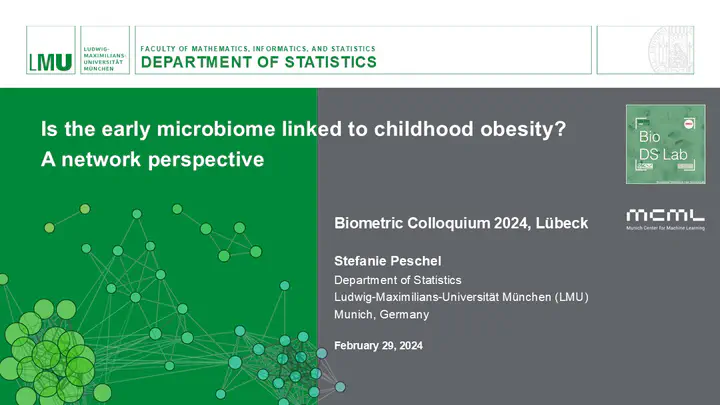
Abstract
Childhood obesity, a prevalent global health problem, is intricately linked to multiple factors including genetics, diet, and lifestyle. Over the past decade, the gut microbiome has emerged as another important factor contributing to obesity pathogenesis. Microbial association networks derived from high-throughput sequencing data offer a promising avenue for exploring the intricate dynamics of microbial communities in the context of obesity. Comparing association networks of the early microbiome between normal weight children and those who become obese at school age may shed new light on the factors contributing to the development of childhood obesity. Due to the specific characteristics of microbiome data, such as compositionality and high dimensionality, not only the construction of microbial association networks, but also their comparison is challenging. In a previous project, we proposed a comprehensive analysis pipeline for the construction, analysis, and comparison of microbial association networks. Since network properties do not follow classical statistical distributions, permutation testing is an essential part of this workflow to compare networks between two groups. Due to the complexity of the methods and the high dimensionality of the data, performing a large number of permutations is often not feasible, resulting in low statistical power. A popular heuristic solution to this problem is to approximate extreme p-values by fitting a Generalized Pareto Distribution (GPD) to the tail of the distribution of the permutation test statistics. In another unpublished project, we proposed an improvement to this method that uses a constrained fit of the GPD parameters to strictly avoid zero p-values. In the current study, we applied this method to data from the PASTURE study, which includes 16s rRNA sequencing data of the gut microbiome collected at 2 and 12 months of age. The aim is to detect differences in the microbial association networks of the early gut microbiome between children who become obese at school age and those who remain normal weight. Following our original pipeline, where p-values are computed based on the empirical distribution of permutation test statistics, did not show significant differences after adjusting for multiple testing. The application of our newly proposed method based on the GPD approximation, however, revealed differences in network properties as well as differentially associated taxa. This allowed us to draw so-called differential networks, where two taxa are connected only if their association is significantly different between the two groups.